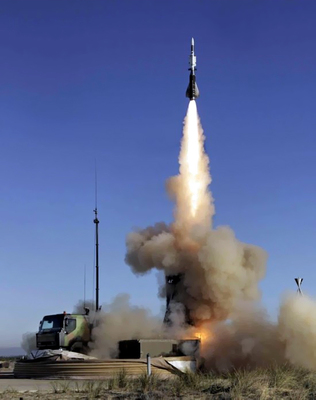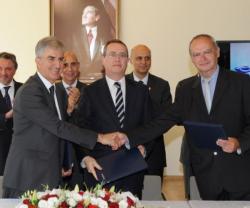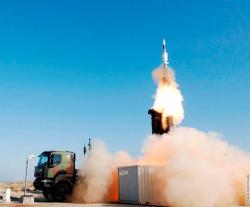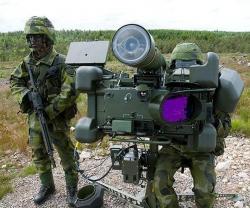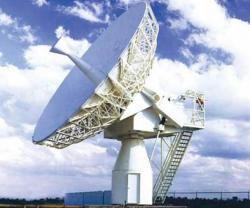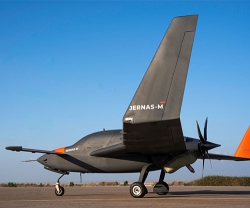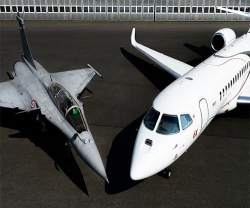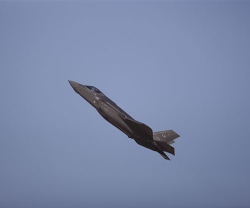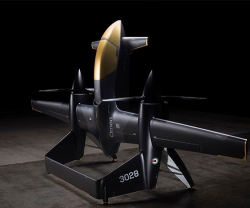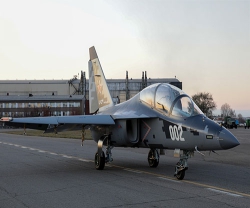Within the framework of the FSAF development programmed whose goal is to provide the SAMP/T system with an anti-tactical ballistic missile defense capability, Eurosam carried out a system firing at the Direction Générale de l’Armement (DGA EM) test range located in Biscarrosse
(south west France) on 18th October 2010.The target used for the firing was representative of a medium-range ballistic missile. All the successive phases of the operational engagement of a ballistic missile ran nominally: target designation transmission to the SAMP/T firing control system, target acquisition by the ARABEL radar, engagement sequence and firing decision, ASTER missile flight sequence and guidance through to target interception.
The target was intercepted at the intended range.
For this firing, the SAMP/T system comprised the Engagement Module, the ARABEL Radar and Identification Module with its Electrical Generation Unit, a Vertical Launch Unit and the ASTER 30 Block1 Missile.
This successful firing is not only a demonstration of the dual capability of SAMP/T to intercept both conventional and ballistic threats but also of its ability to provide one of the key elements of the future European defense architecture discussed at the recent NATO conference in Lisbon.
The Aster missile family (which also includes the naval variants Aster 15 and Aster 30) constitutes the most important missile programme ever launched in Europe and the second largest defence programme managed by OCCAR after the A400M tactical transport aircraft. Having been taken up by three European countries and two export countries, today, the Aster family offers the largest installed base of European missile systems. The MBDA/Thales order book for this system includes a total of 55 naval and ground-based systems and more than 1,700 missiles scheduled for delivery.
The Aster missile is differentiated from all other current and future global products by its unequalled flexibility which enables it to counter saturating attack scenarios against low radar signature targets with the same probability of success whether at low or high altitude. Thanks to this flexibility, the system is equally relevant in defeating the traditional aerial threat as it is in countering more recent scenarios associated with asymmetric warfare or force projection.
In the Aster 30 Block 1 version, which today equips SAMP/T, the missile is capable of intercepting ballistic missiles of the 600km class, the class which constitute the main current threat. Incremental evolutions of the missile have already been proposed to counter the proliferating and growing global ballistic threat. These evolutions will be transferable to all systems currently deploying Aster 30.

